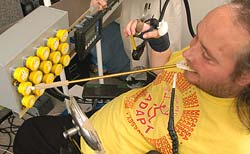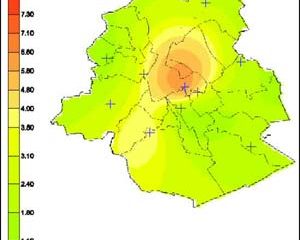Latest News

Stanford researcher links life-saving benefits to traffic
Police should hand out more traffic tickets. While Robert Tibshirani, PhD, won’t win any popularity contests with that sentiment, the Stanford School of Medicine researcher and his colleagues at the University of Toronto report in a paper being published in the June 28 issue of The Lancet that vigilant traffic law enforcement may reduce fatal car crashes.
The team examined the records of drivers in Ontario, Canada, and found that receiving a traffic ticket reduces a driver’s risk of dying i

The Italian-French interferometer Virgo will be inaugurated on July 23rd
This innovative instrument is aimed to hunt the elusive gravitational waves using extremely sophisticated technological solutions.
On July 23rd in Cascina, near Pisa (Italy), the new Virgo interferometer will be inaugurated. The innovative Virgo gravitational-wave-detector is the outcome of more than ten years of collaborative research and development between the National Institute of Nuclear Physics (Infn, Italy) and the National Scientific Research Centre (Cnrs, France). Letizia Mor

Student-Built Pill Dispenser
High-Tech Device Allows Quadriplegic Man to Take Medication Without a Nurse’s Help
Four Johns Hopkins undergraduates have a designed and constructed a computer-guided pill dispensing machine that will enable a quadriplegic man to lead a more independent life. Using a mouth stick, Robert Arthur Williams will be able to order one of up to 12 different medications stored inside the machine. Then, when Williams taps a “slam switch” (he has limited mobility in his right arm), the mac

Human stem cells improve movement in paralyzed rats
In the current issue of the Journal of Neuroscience, Johns Hopkins researchers report that injection of human stem cells into the fluid around the spinal cord of each of 15 paralyzed rats clearly improved the animals’ ability to control their hind limbs — but not at all in the way the scientists had expected.
“Our first hypothesis was that functional recovery came from human cells reconstituting the nerve circuits destroyed by the paralysis-inducing virus we gave the rats,” says first

Pelvic floor exercises good for men too
Pelvic floor exercises for men have been found to be highly effective in restoring erectile function according to recently published research. Research at the Faculty of Health and Social Care at the University of the West of England, Bristol, shows that pelvic floor exercises result in the same overall improvement rate seen in a large trial of men taking Viagra.
Fifty-five men with an average age of 59 years who had experienced erectile dysfunction for 6 months or more took part in the tri

EU research project proves that personal choice can dramatically improve urban air quality
Stop smoking and leave your car at home. Encouraging people in cities to make simple lifestyle changes, such as using alternative forms of transport to the car, can significantly reduce their exposure to harmful air pollutants. The findings of the first in a series of Europe-wide air quality studies was announced today in Brussels by European Research Commissioner Philippe Busquin and Didier Gosuin, Environment Minister of the Brussels-Capital Region. The first phase of the “Population Exposure to Ai











